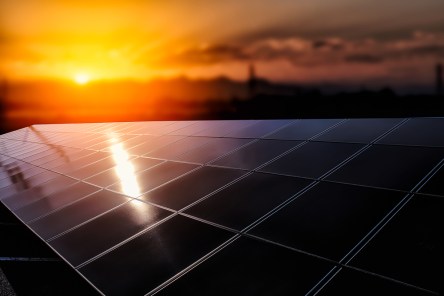This is the last year that businesses are eligible for the 30 percent federal investment tax credit (ITC) for solar—sort of. A few simple steps can position businesses take advantage of the solar ITC before step downs begin next year. The Tax Benefit Step Down Tax benefits have motivated sustainable upgrades over the past ten years. The 30 percent ITC was the most popular. The ITC “provides owners of solar systems with the ability to offset tax payments owed to the IRS in an amount equal to 30 percent of the eligible cost basis of a solar photovoltaic system,” summarizes Smart Energy Decisions. Beginning in 2020, however, the tax benefit will gradually decrease. The first step decline is to 26 percent for projects that “begin construction” in 2020. In 2021, the benefit declines to 22 percent. All projects starting in or after 2022 receive only 10 percent. “The good news is that there is currently a 30 percent ITC for the cost of the system for those installing solar before December 31st, 2019,” emphasized Ray Segars, CEM, consultant for energy and sustainability on Yardi’s energy team. He added, “The emphasis is on credit. This is a credit not a tax deduction. Tax deductions reduce taxable income, thus reducing associated taxes. Tax credits are more valuable because they reduce the actual tax bill dollar for dollar.” Gaining the Advantage on the Solar ITC Notice 2018-59 details strategies to help corporations navigate the step downs with financial finesse. Firstly, “beginning construction” is a surprisingly loose term. There are two ways that a project may begin and still qualify for the year’s tax benefit. The Physical Work Test entails beginning physical work on your solar project The Five Percent Test entails paying or incurring 5 percent or...
Nissan Energy Solar
Robust Power, Recycled
Some believe that solar panels require direct sunlight to work. Those same people may believe that the UK is the world’s most unsuitable place to harness the sun’s energy. Well, they are wrong. More than 880,000 people in the UK use solar panels and Nissan has taken note. In mid-March, the car manufacturer joined the ranks of Mercedes-Benz, Renault and Tesla and launched their take on a complete home energy management system, which they named Nissan Energy Solar. For now, only UK residents can try it in their households. This idea of utilizing the most valuable part of its electric vehicles—the batteries—after they’ve lived their first life in one of the vehicles (or have been declared terminated post some accident) is new and golden. Nissan is making a bullish push into the energy storage industry, and it does it on three fronts at once: using homes as powerhouses; off-grid power storage; electricity generator park. The storage system Nissan proposes, the xStorage, is the result of a collaboration with Eaton Industries. The xStorage can have three power options: 3.6 kilowatts, 4.6 kW or 6kW. There are two battery options, 4.2 kW or 6kW. The average unit weighs nearly 300 pounds (135 kg). Benefits of the system include: Increased independence from the national grid and electricity providers Cost reduction on your electricity bill of up to 66 percent The ability to generate, store and manage energy for use overnight (despite cloudy weather) and charge Nissan electric vehicles. A six-panel system costs about $5,383 including installation. Full solar and storage systems start at roughly $10,589. This solar plus electric vehicles is clearly a match made in heaven. According to CleanTechnica, about 32 percent of the electric driving respondents have also installed rooftop solar power. In addition, this type...
Solar Surfaces
Energy Produced in Place
A revolutionary new technology can put solar cells on almost any surface, transforming traditional solar energy installations and turning buildings into power generators. Rising up from suburban sprawl like the mythical Oz, the downtown business district of any major metropolis repeats a familiar scene: high-rise office buildings, covered in windows, reaching for the sky. Skyscrapers may typify city skylines, but all that reflective glass also represents an incredible opportunity. Imagine harnessing all that surface area by converting those reflective surfaces into powerful solar arrays. That’s the idea behind Santa Barbara-based startup Next Energy Technologies groundbreaking solar technology. Surface Generation Currently, buildings account for anywhere between 40-50% of total global energy use and over half of all CO2 emissions. In addition, electricity represents one of the largest variable operating expenses building owners face, accounting for as much as 20-25% operational budgets. Many facilities successfully reduce consumption by incorporating renewable energy onsite and energy efficiency strategies like LED lighting and energy management systems. But what if the buildings themselves could generate power? The concept is deceptively simple: use transparent solar cell ink to print photovoltaic cells directly between standard dual-pane windows. The genius lies in the execution. For Next Energy founders Daniel Emmett and Corey Hoven, it’s all about making solar efficient, customizable and inexpensive. Windows Transformed “The most important difference with our technology is the transparency,” Hoven explains. “While all other solar cells are opaque and absorb all visible light, the windows that use our system look like conventional windows. They can allow the visible spectrum to get through, which makes our solar cells highly efficient without changing the appearance or functionality of the window.” Tinted windows can help manage indoor temperatures and lessen heating and cooling costs, but adding a solar component ups the...



